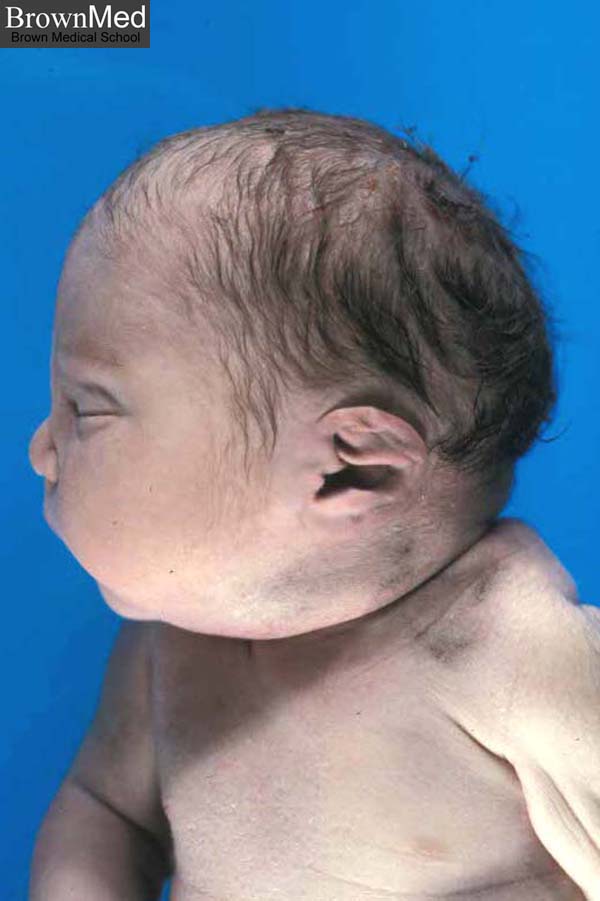Facies
Under a facies (Latin facies, face ',' countenance ') are understood in geology all the properties of a rock resulting from its genesis. It may be descriptive characteristics (color, layering, the predominant rock, fossils ), those to the emergence (sedimentation, metamorphism ) or weathering.
Foundations and language use
The name came originally from the Swiss Amanz Gressly (1838 ), who defined it as " the sum of all primary organic and inorganic characteristics of a deposit in one place".
The term facies is used very comprehensive in different rock properties. A distinction is purely descriptive Faziesbegriffe as "green, marly facies " and the formation conditions described Faziesbegriffe as " highly saline Lagunenfazies ". Facies refers primarily to descriptive properties, while structurally - chronological criteria are referred to as lithostratigraphic layers ( strata ).
In common parlance, the geologists are understood even today among facies often historically simplistic exclusively the properties of sedimentary rocks, which are due to the conditions during sedimentation without the subsequent diagenesis ( rock formation) (ie a description of the depositional environment ). Strictly speaking, one should speak of sedimentary facies but here. Also, it is not consistent, in principle exclude the diagenesis and metamorphism to readmit the other hand, as Faziesmerkmal. This narrowing of the Faziesbegriffes historical reasons, as you apply it finished in the 18th century only to sediments and sensibly wanted originating separate the rock properties of the deposition of subsequent processes such as weathering.
In addition to training the Rocks ( lithofacies ) can also be obtained in the rock fossils ( biofacies ) Notes on the climate, provide habitat and other environmental conditions that existed at the time of deposition. Fossils, which (unlike index fossils ) restricted to specific Faziesräume, and these are typically are referred to as Faziesfossil.
In reference to the three basic types of rocks: sediments, igneous and metamorphic rocks can be distinguished in principle sedimentary, igneous and metamorphic facies.
Terms such as microfacies or electrofacies describe research methods for determination or identification of various facies.
Examples
Some examples of different facies are:
- Neritic facies ( to distinguish it from Tiefseefazies )
- Ostracod facies (contains shells of small crustaceans)
- Metamorphic facies ( by pressure and temperature at depth altered rocks )
Facies
Großfaziesbereiche ( on regional facies ) can be divided into increasingly smaller facies.
In sedimentary rocks, for example, a marine facies roughly into a deep-water facies (pelagic or abyssal facies ) and a Flachwasserfazies ( neritic facies ) could be distinguished. The Flachwasserfazies could in turn divided into a reef and a Lagunenfazies. This allows the paleogeography of the depositional environment of the sediments to be reconstructed. For example, results in the distribution of various carbonate facies in the area of today's Altmühltal valley an accurate model of the ocean basin, which was the age of the Jurassic of the depositional environment of the carbonates.
In igneous rocks can provide information on the cause, location and design of the magmatism of different geochemical facies composition and thus different mineral composition and different forms of eruption and cooling history ( plutonic and volcanic rocks ).
In facies metamorphic rocks, a distinction based on characteristic Mineralzusammesetzungen that form under certain pressure and temperature conditions. A distinction Unterfazies as greenschist facies albite - epidote - almandine or facies that correspond to defined areas of metamorphosis. Areas of different metamorphic facies can be used to reconstruct the metamorphic conditions. For example, the distribution of metamorphic facies of former subduction zones characteristically different from those of a metamorphosis in the reduction within a sedimentary basin.
Faziesentwicklungen, Faziesregel by Walther
Facies differ not only palaeogeographic spatially but can also develop over time. For example, due to a rise of the sea ( transgression ) Litoralfazies ( Küstenfazies ) above Strandfazies. The Faziesregel by Walther (1894 ) states that in undisturbed layering this facies can only lie one above the other, which can also occur at the same time side by side.
Microfacies
To be distinguished is the concept of microfacies. This is understood as no separate facies, but the combination of all Faziesmerkmale, which are only visible under a microscope. Examples for this are the type of cementation of sandstones or the occurrence of certain hard parts of microorganisms in a limestone. Especially with carbonates an extremely detailed determination of sedimentation and its development is mikrofaziell possible.
Electrofacies
Also delineate the concept of electrofacies. This is understood as no separate facies, but the summary of various rock features which are to be determined by well logs. The term comes from the petrophysics. Data from borehole measurements such as electrical conductivity, neutron density and natural gamma radiation of the pierced rock are plotted in graphs against each other. Different rocks now grouped in different areas, whereby various electrofacies be defined.
- Rock










